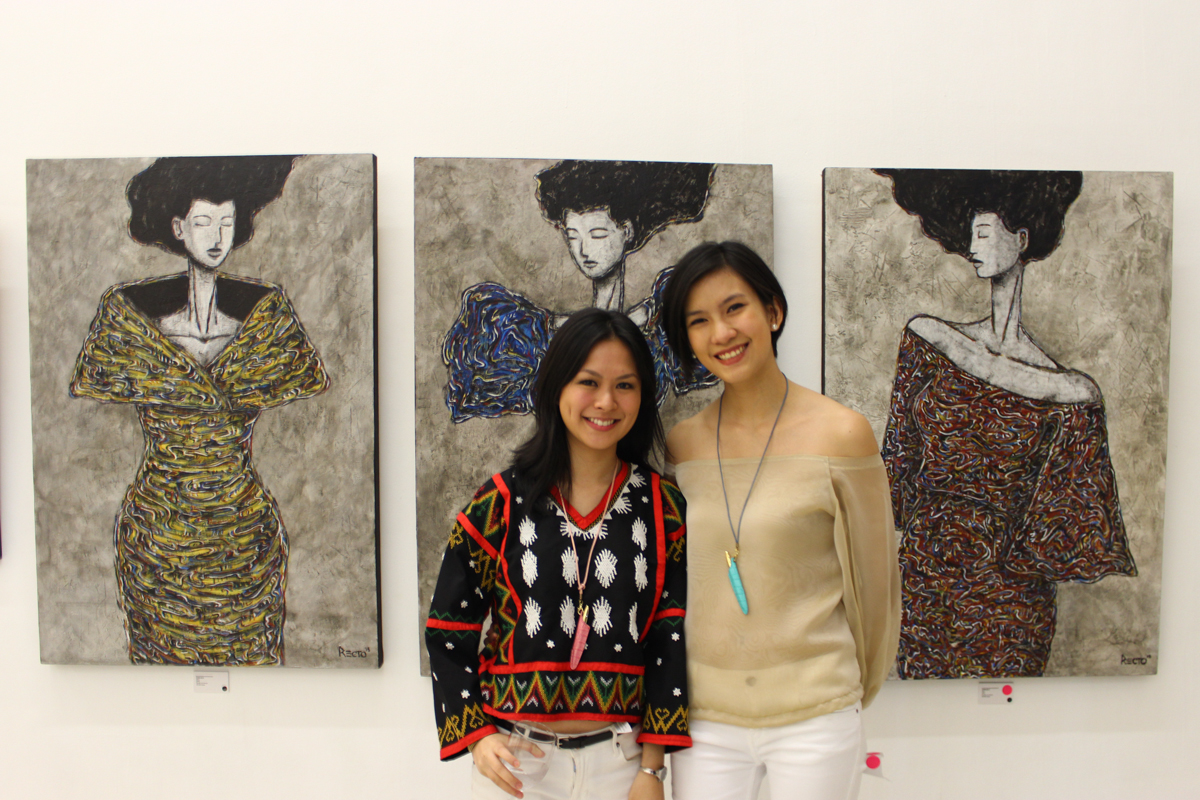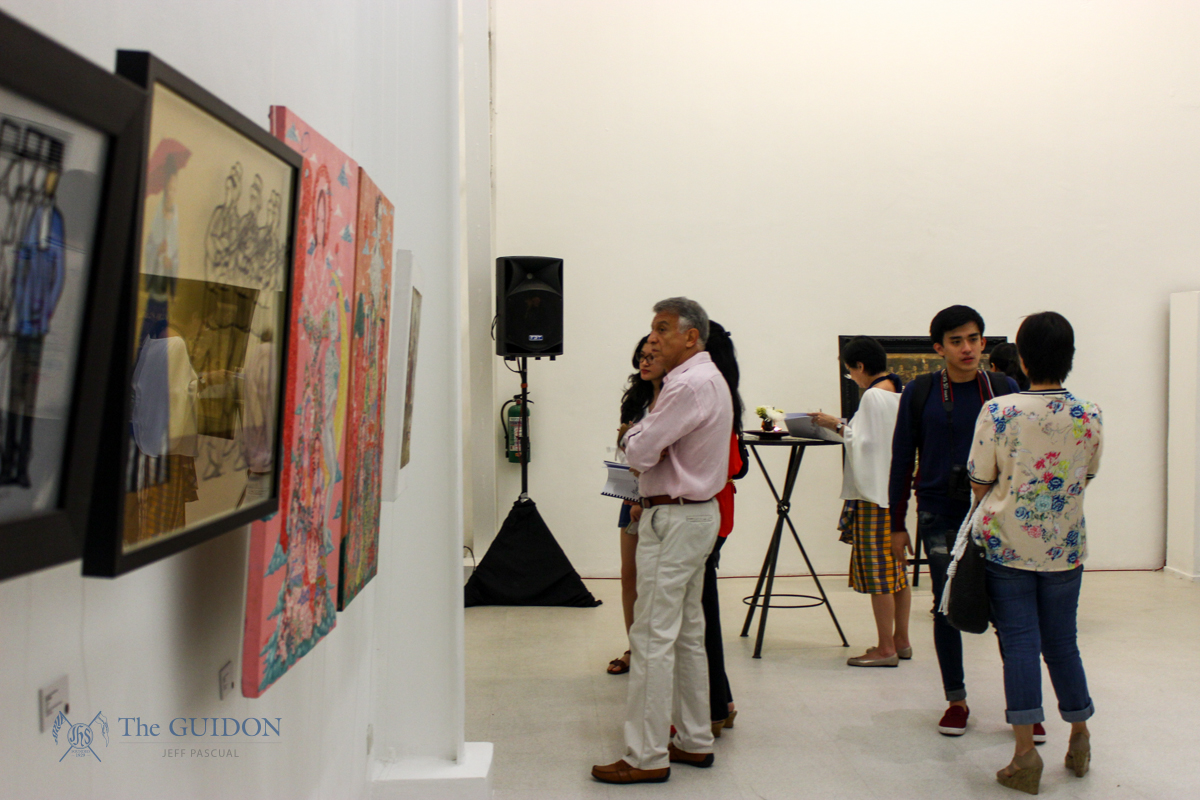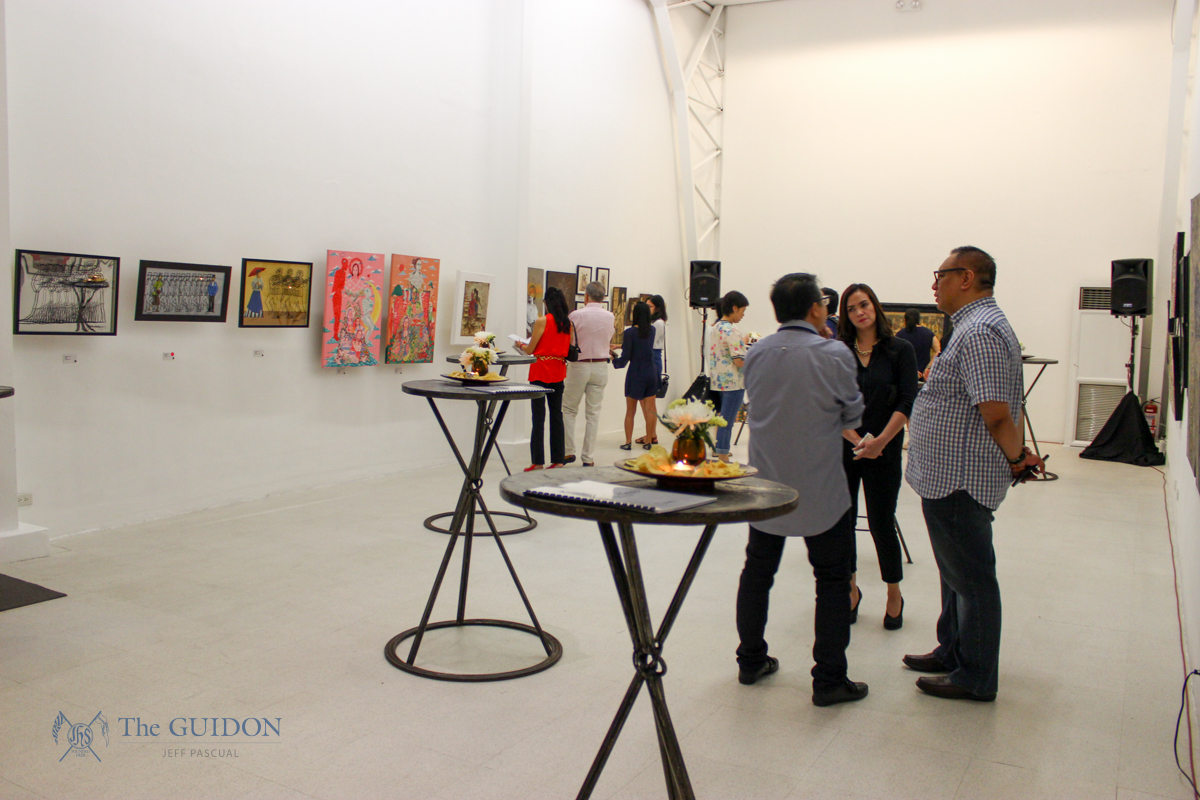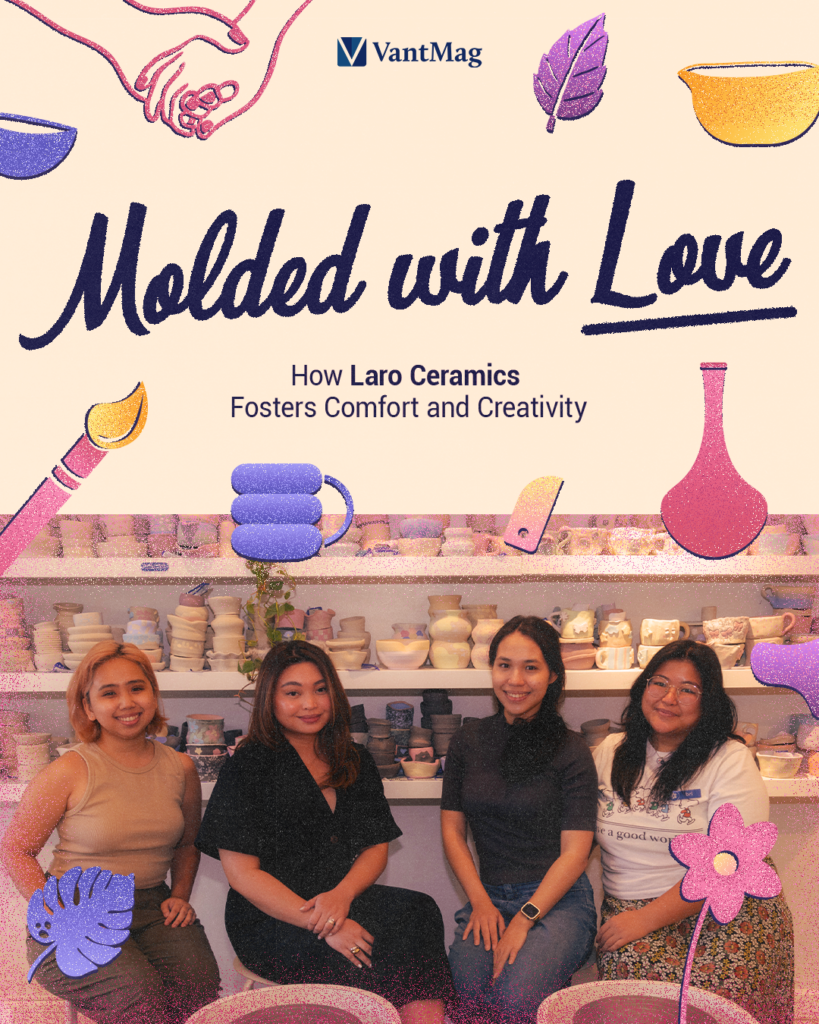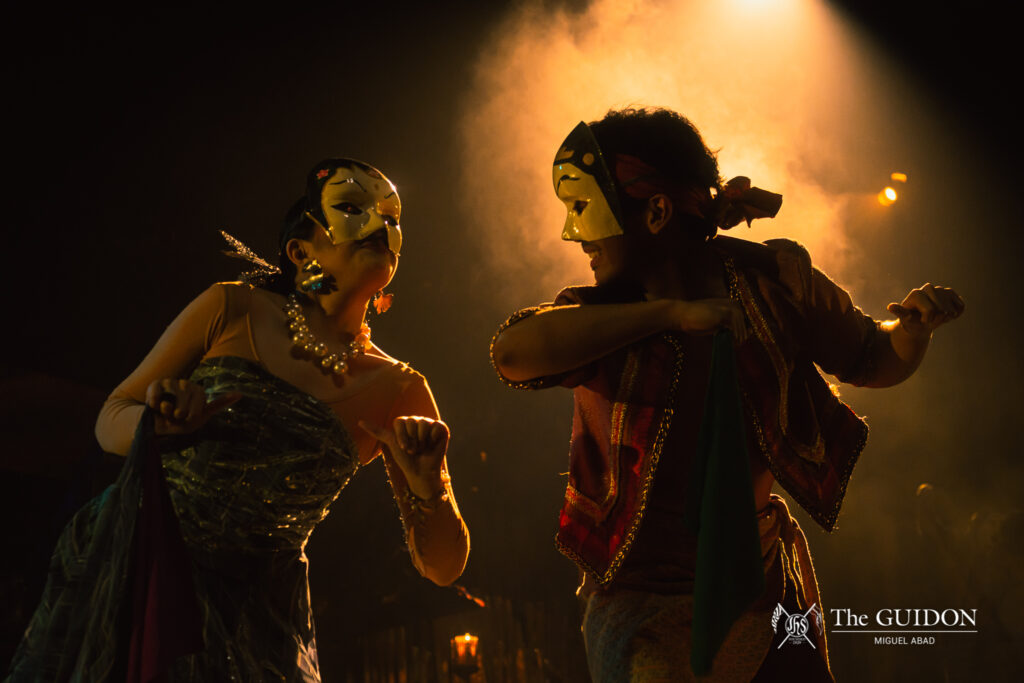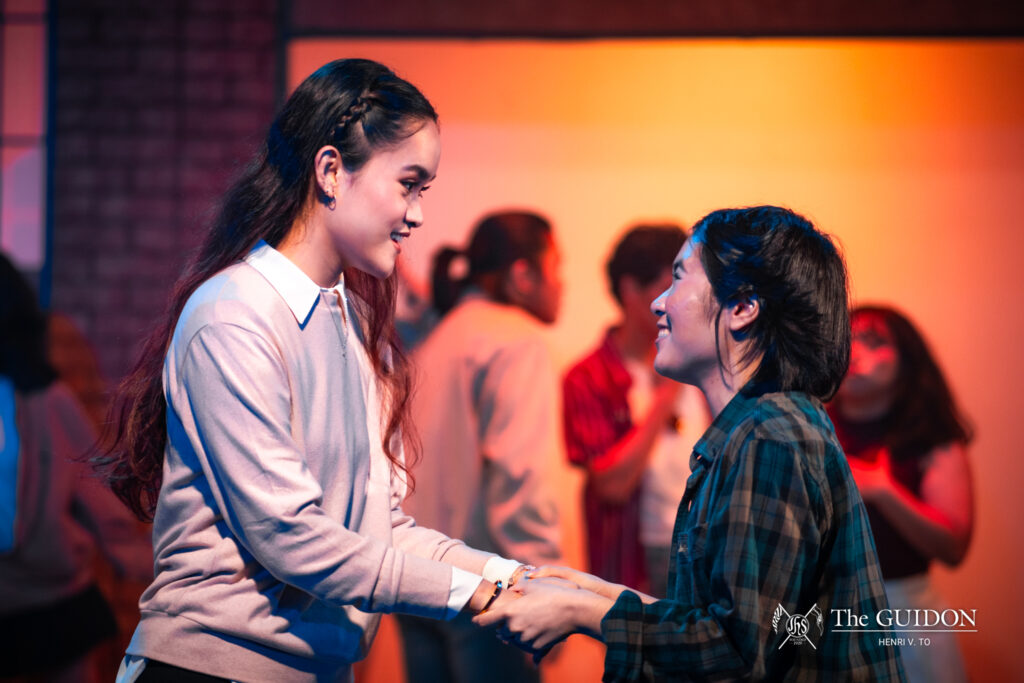“So, what’s the plan after college?”
While this question makes all college students squirm, fine arts students and new artists find it especially difficult to answer because of the lack of available platforms for their work. Enter Bambina Jacinto, a graduate with a degree in Entrepreneurial Management from the University of Asia and Pacific who recognized the need for an intermediary between artists and art collectors and decided to bridge this gap for her senior thesis alongside long-term friend and Atenean alumna Dani Osmeña (BS MGT ‘15).
As a result, they launched Slate Manila in November 2014, an art management firm that introduced emerging local artists to the local art industry through pop-up art exhibitions.
Uniquely their own
What distinguishes Slate Manila from other art management firms is their selection process, which is rigged to value an artist’s merit over their connections. Osmeña shares, “We wanted to be that thing that you can find online and decide ‘I’m gonna submit my artwork just through an e-mail to… people I don’t even know’.” She adds that from the artist’s perspective there is the understanding that, “…they’re gonna judge me based completely on my artworks and not based on, like, where I live, who I am, or who I know in Manila.”
The success of Slate Manila’s first exhibition last year spurred Jacinto and Osmeña to create their second show entitled “Manila Memoirs” to highlight Filipiniana inspired artworks. On November 20, 2015 at the Whitespace Manila Lobby, Manila Memoirs debuted and set itself apart from last year’s surrealist exhibit entitled “Novus Praeternatura.” As to their choice of theme for this year, Osmeña sys, “[People] wanted something more Filipina, something more traditional to put in their houses.”
Images of Old Manila
“Slate Manila: Manila Memoirs” featured seven local artists including Alfonso Recto, Vincent Navarro, and Edmar Colmo, as well as Slate Manila veterans of last year Norlie Meimban, Melvin Guirhem, Sayid Cedicol, and Jonathan Benitez.
Recto’s paintings, Dilaw, Pula, and, Asul, each depict a variant of the Filipiniana dress in the colors yellow, red, and blue, respectively. He paints swirls of colors on the dresses to create movement and rhythm. Guirhem’s artworks depict portraits of women, which he livens up by placing different patterns on their skin and clothes; his artworks include Damsel 1, Damsel 2, Floral Maiden 1, Floral Maiden 2, Demoiselle 1, and Demoiselle 2. Colmo brings together meaning and tradition in his works Maria and Santa Maria. Both paintings feature layered textures and scattered but complimenting colors. Santa Maria, in particular, features images of prominent figures in Catholicism such as Mother Mary and Jesus.
Meimban’s pieces attempted to create a flat time-lapse with the use of overlaying outlines between the subjects of the paintings Love at First Sight, Abaniko, and Harana, Navarro’s Portrait of a Filipina, Sangley Filipina, and Independencia y Educacion played on the concept of mixed media by painting images of evocative old photographs inspired by Francis Van Kamp from the 1980s accompanied with hoops and moths.
The paintings weren’t only aesthetically pleasing, they were also socially relevant. Benitez, in his series “Mysterious Women,” utilized textures to cover the heads of Filipinas to express their limitations in Old Manila. According to Cedicol, his paintings Waiting in Vain and Fill-Up-Alieniana portray “the Filipina as a strong, capable woman responsible for providing logistical support for much of known history, despite being relegated to the background.” Further expounding on the concept, his “KKK” series shows women carrying potentially violent items like axes and shovels.
Pieces from Jim Orencio, Keb Cerda, and Toti Cerda were also on sale for the benefit of the ICanServe Foundation, a community that seeks to help women with breast cancer. Orencio’s “Kaagapay” paintings were a series of portraits of different women, Keb Cerda’s Nene is typing… showed a girl carrying a bilao, a large woven tray, while a “typing chatbox” with ellipses floats over her head, and Toti Cerda’s Luna showed two women pointing at a distant moon.
Since Osmeña and Jacinto don’t choose the art based on prior experience or artistic academic background, this wide collection of artworks was curated based on “how unique [the inspirations of the artists were],” says Osmeña. She adds, “A lot of [the paintings chosen were] emotional rather than talking about brushstrokes.”
Ripple effect
Despite having previously done only one art show, Slate Manila has made a tangible impact on the local art scene as well as the lives of their featured artists. Osmeña shares, “I feel like we’re able to put some of their names out there, [especially those] who weren’t quite so recognized before.” Although it started as a thesis project, Slate Manila is steadily growing as a sustainable business. Jacinto will soon be moving to Los Angeles to study art and both of she and Jacinto see it is a new business opportunity. “We were hoping to get some of our artists recognized abroad, in the States for starters, with [Jacinto],” Osmeña said.
While future plans have yet to be finalized, the vision of Slate Manila remains clear. Osmeña says, “What we want more than anything is that for more people to have access to Slate [Manila]… so if they have no one that can appreciate their work and try and promote it for them, we’re there.”


